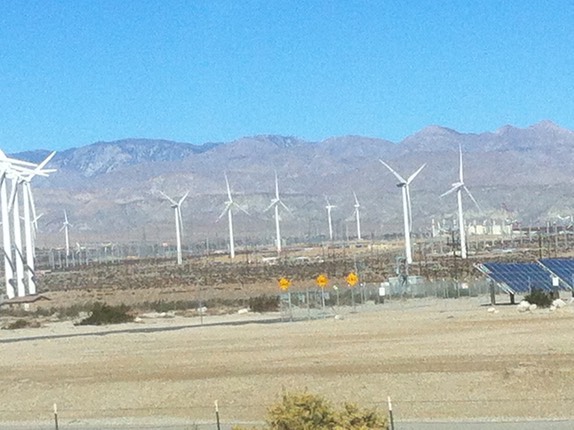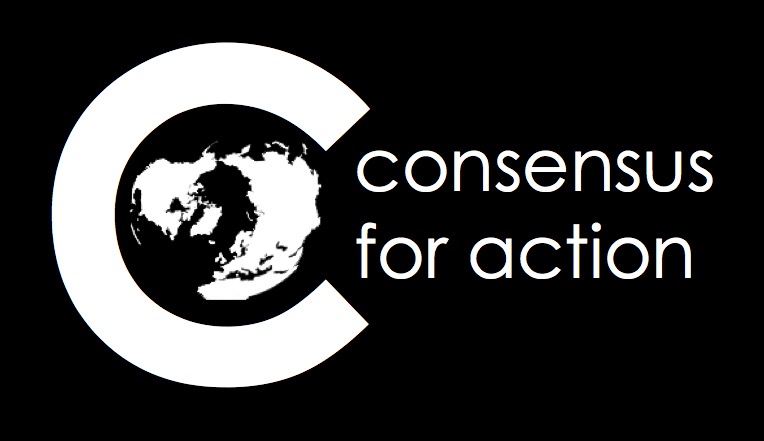We can restore the climate of the 1980s by 2070. It won’t require a miracle or big sacrifices, just the will and policies to do it. Top climate scientists confirm this is possible.

Restoring the climate requires that we switch to carbon-free energy by 2030-2050, as described by Stanford’s Prof. Mark Z. Jacobson, and let the ocean continue absorbing the carbon dioxide we've emitted.
In 1961, President Kennedy declared: “We will send a man to the moon and bring him back safely by the end of the decade.” At the time we had just sent a man into space for 15 minutes. We did not have the rockets, the navigation or the life support systems for a moon trip and most people, including my parents, thought it was complete folly. Seven years later we had developed and demonstrated the technology -- ahead of schedule. We had a clear ambitious goal and a deadline, and we rose to the occasion.
We can do that again with the climate. Shifting the world’s energy from fossil fuels to renewables could be accomplished before 2045, with CO2 levels peaking about 430 parts per million. That is up from 280 ppm a hundred years ago, 400 ppm now, and our goal of 350 ppm, which is considered to be a safe level and last seen in 1988.
Scientists and skeptics agree that about half the CO2 emitted globally has been absorbed by the oceans already, and expect that half of future emissions will be absorbed over the next 25-35 years. The oceans will continue to acidify, and the only way to slow that is to reduce emissions. We might even decide to actively remove CO2 from the atmosphere to hasten a restored climate. If so, there are dozens of companies working on it and we have dozens of years to perfect some creative methods.
The shift to renewables would be accomplished mainly by using wind and solarpower. Only wind and solar are ready for utility scale now at the low costs we need. The market will decide which alternative sources, such as biofuels or nuclear, may become cheaper and better over time.
Wind generation has been growing at over 25% per year for the last six years. It provides 3% of our country’s electricity now. If we maintain that growth rate, it will provide 50% in 2025. This would be something like 2,000 modern 5-megawatt turbines per state. Solar provides 1% of our electricity now, and is growing at over 50% per year. If we keep up that pace, it will produce the other 50% of our electricity by 2025. China is already building panels at ten times the US rate, so catching up to and even surpassing their production is plausible. Efficiency improvements will provide at least a 30% reduction in our requirements. For example cars are slated to double their mileage by 2025 and LED lights are now ten times more efficient than old incandescent bulbs.
Twenty years is plenty of time to develop the missing links such as batteries, smart grids and domestic manufacturing capability. Compare that to the 5 years we spent building the 300,000 aircraft that helped us win WW II, using 1940’s technology, or the 7 years developing the technology for the moon program with 1960’s technology. We now have Google, computers, 3D printers, and millions of highly educated engineers connected by the internet.
The looming issue is the rapidly growing CO2 emissions in China and India. China is working hard to slash its fossil fuel consumption and severe air pollution--since 2012 China has been building more new wind capacity than new coal and the New York Times reports that China is expected to reduce its net coal imports to zero by 2015. India’s neighbor, Bangladesh, has set an example by installing solar roofs at a rapid pace, without subsidies, thereby skipping the development of expensive and unreliable utility and fossil fuel infrastructure. They already have 2.5 million solar roofs powering LED lights, phones, refrigerators, and TVs. This is fifteen times as many as California has now. As solar panel production soars, its cost plummets — it is below the cost of fueling kerosene lamps in most developing countries, and will soon fall below the cost of utility electricity in the cities. For that reason, India is now starting work on the world’s largest solar plant—4 gigawatts.
Switching to renewables will create many local jobs in the US, while costing some fossil fuel jobs. It will stabilize energy prices because the sun and wind are free and the technology costs are steadily decreasing. It is shown to increase network reliability because with thousands of solar panels and wind turbines, the loss of a few has little effect.
We can restore the climate if we want to, or continue on the conservative path Exxon CEO Rex Tillerson and the Koch brothers understandably suggest: Debate the science and adapt to climate change. Let other countries invest in and master renewable energy technology. The trillions of additional dollars to adapt to the worsening climate and rising seas will come out of public and private funds, not theirs.
Tell your children, President Obama and your representatives which legacy you want to give to our grandkids: Restore the climate by 2070. That is our moonshot. Let’s commit to it. There is room for small government fans and everyone else to contribute in this game.
By Peter Fiekowsky, pfieko@gmail.com. Peter Fiekowsky is a physicist, business owner, and volunteer for Citizens Climate Lobby.

